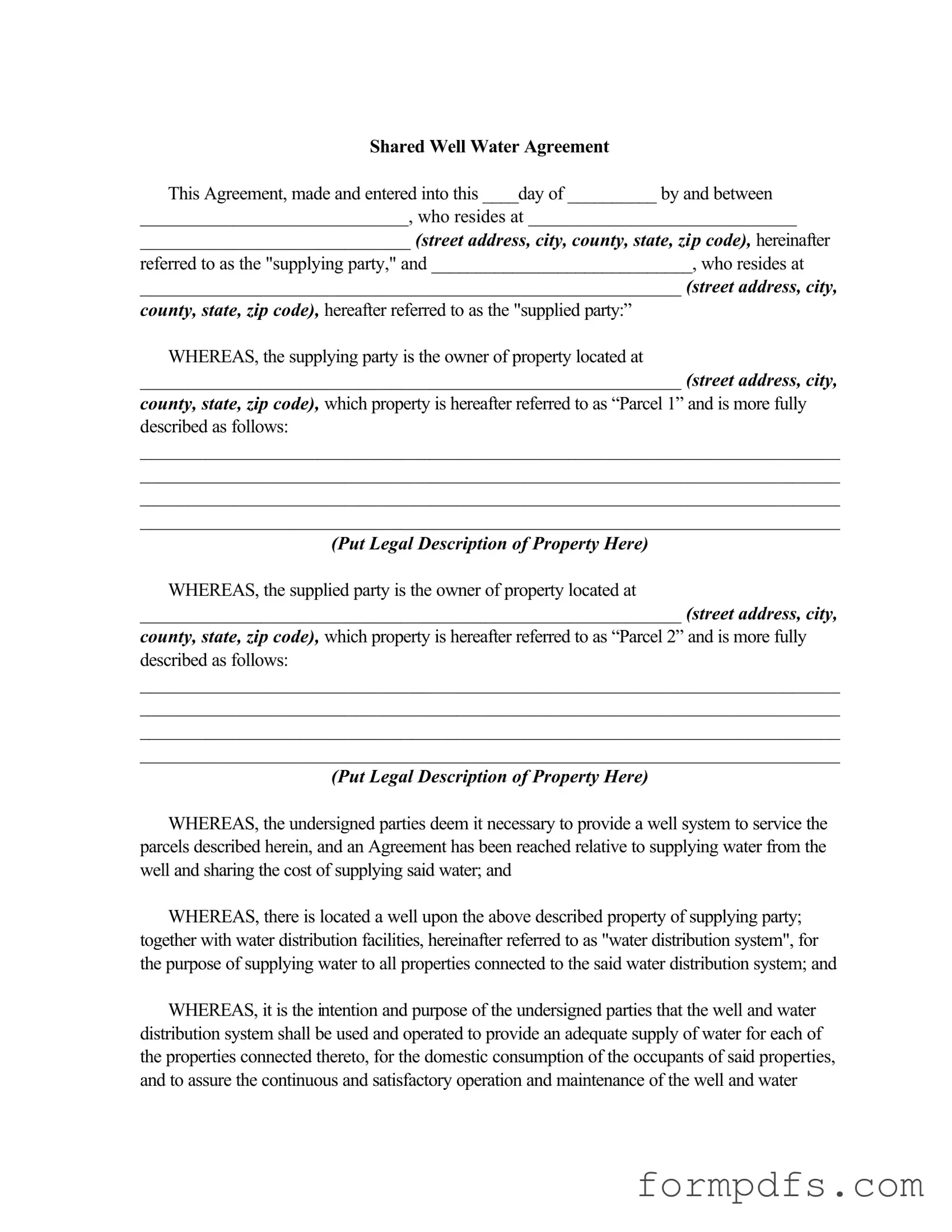What is a Shared Well Agreement?
A Shared Well Agreement is a legal document that outlines the terms and conditions under which multiple parties can share a well and its water distribution system. This agreement typically involves two parties: the supplying party, who owns the well, and the supplied party, who receives water from the well. The document details the rights and responsibilities of each party regarding the use, maintenance, and costs associated with the well and water system. It ensures that both parties understand their obligations and helps prevent disputes in the future.
What are the key components of a Shared Well Agreement?
Key components of a Shared Well Agreement include the identification of the properties involved, the rights to draw water from the well, the annual fees for water usage, and the sharing of maintenance costs. The agreement also specifies the responsibilities of each party regarding repairs and maintenance of the water distribution system. Additionally, it outlines the process for terminating the agreement and the conditions under which the rights and obligations of the parties may cease. This clarity helps protect the interests of both parties.
How are costs shared in a Shared Well Agreement?
Costs associated with the operation and maintenance of the well and water distribution system are typically shared equally between the parties involved. Each party is responsible for paying half of any necessary expenses, which may include electricity for pumping, repairs, and maintenance. The agreement also specifies that any costs related to removing or replacing site improvements due to maintenance will be borne by the affected parcel owner, except for shared boundary fencing or walls, which will be split equally.
What happens if one party wants to terminate the Shared Well Agreement?
If a party wishes to terminate their participation in the Shared Well Agreement, they must execute and file a written statement of termination at the appropriate county office. Once this is done, the terminated party will no longer have the right to use the well and must disconnect their lateral connection from the system. The costs associated with disconnection will be the responsibility of the owner of the parcel that is terminating the agreement. This process ensures that all parties are aware of their rights and obligations when ending their participation.
